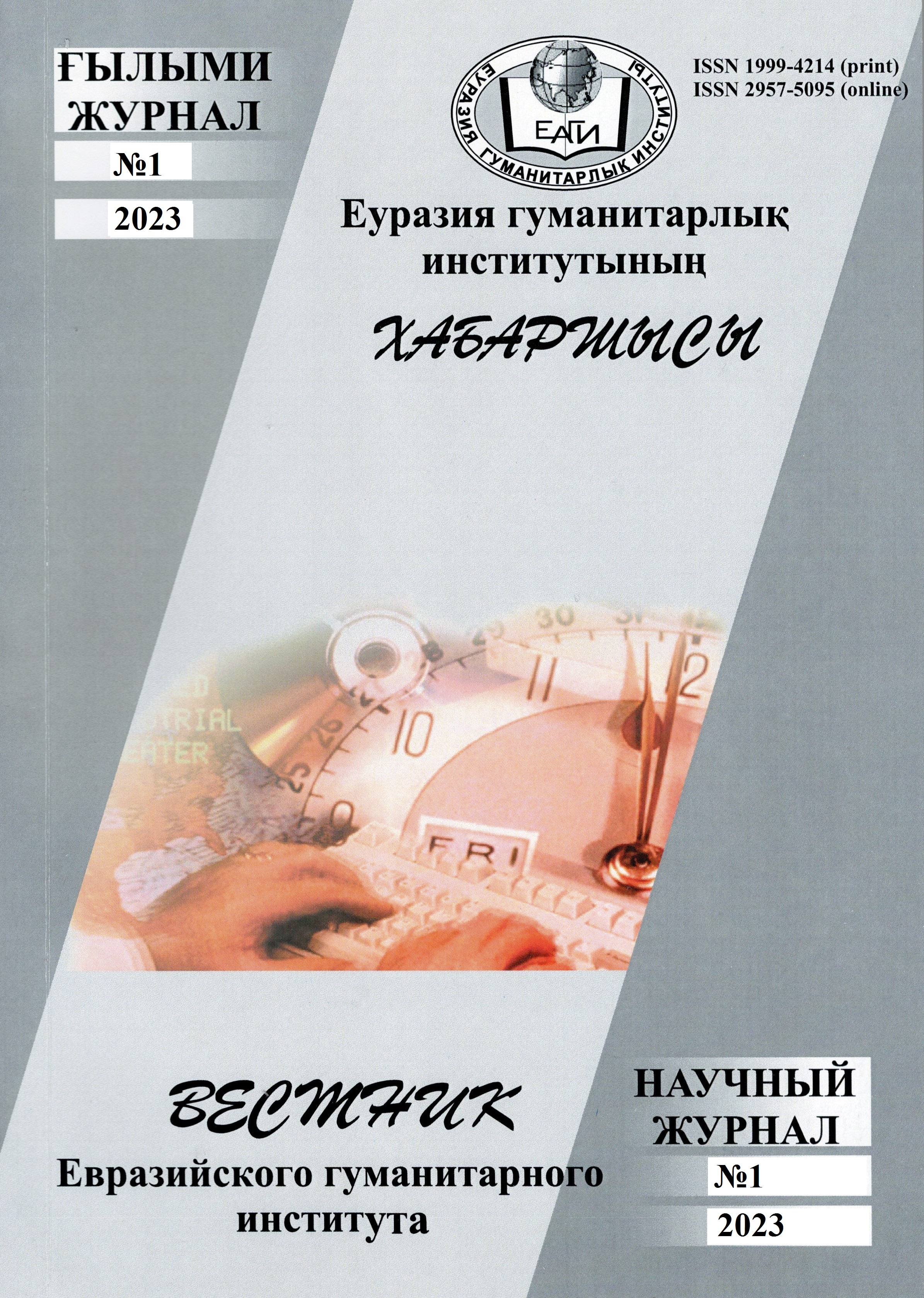USAGE OF FHRASES IN THE KAZAKH LANGUAGE IN THE AZ-ZAMAKSHARI’S DICTIONARY "MUKHADIMAT AL-ADAB"
Keywords:
Az-Zamakhshari; «Mukhadimat al-Adab»; turkish dictionary; Turkic studies; Kazakh language; phrases.Abstract
Az-Zamakhshari is a great historian, geographer, literary critic, linguist, teacher and a poet of his time. In modern terms, as a public figure he left to the next generation invaluable works on logic, grammar, religion, dictionaries, literature, literary studies, pedagogy, history and geography. Many of his writings have reached us. One of his precious legacies left to the generations is his dictionary, titled «Muqaddimat al-Adab». This article discusses the structure of phrases in Az-Zamakhshari's work «Muqaddimat al-Adab». The manuscript of his unique four-language Arabic-Turkish-Mongolian work in the world is currently kept in the Alisher Nauai Literature Museum in Tashkent.
According to the researchers, the scholar's «Muqaddimat al-Adab» includes Arabic-Persian-Turkish-Mongolian languages, however the Turkish section is not finished. The difference between the dictionary and the modern bilingual dictionaries is, firstly, that it includes several languages, and secondly, it was created by combining it with phrases, not just a list of words. This article talks about phrases from the dictionary «Muqaddimat al-Adab». Their transmission structures are shown and the similarity with modern Kazakh phrases is analyzed. In the dictionary, phrases are represented by a root cell. In this regard, it is discovered that it corresponds to the structure of the dictionaries created during the period of Muslim civilization. In most dictionaries of the Middle Ages, words and phrases were created using cells (models) similar to the phonetic structure of the Arabic language. Here, the root of the word is shown first, followed by a phrase made from that word. Words and phrases are arranged not according to their meaning, but according to the external form of the word. Phrasal verbs are also listed in the dictionary. However, it can be seen that their translations are not aligned with the phrasal verbs in the translated language. Several verbs are formed from one root, and various phrases formed from them are concentrated. Phrasal verbs formed within one word are collected as a group. From this aspect, the article considers phrases taken from dictionaries. The materials collected in this article are given as a general description of the phrases in the dictionary. In our future studies, it is planned to consider them together with the phonetic-morphological aspect.


